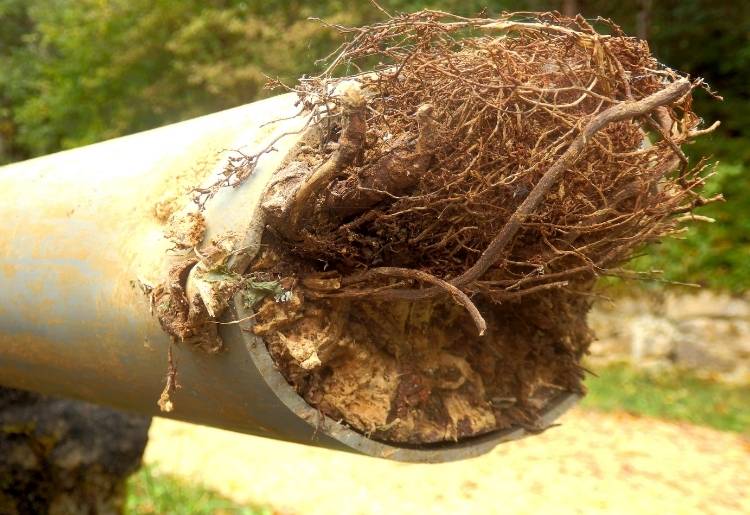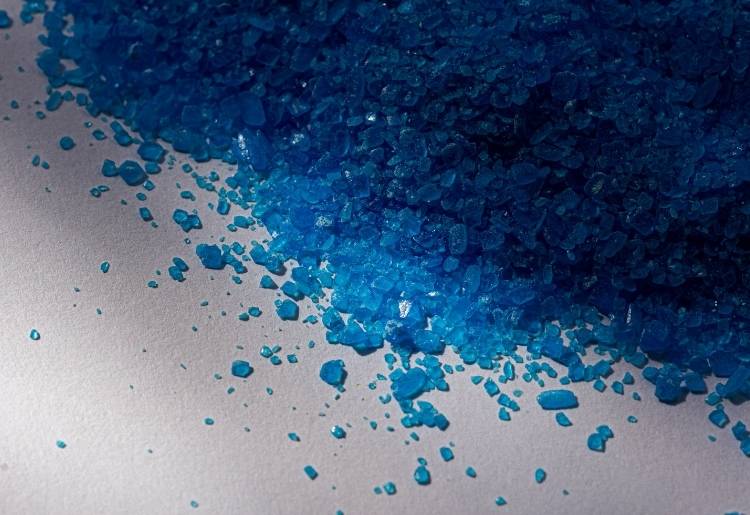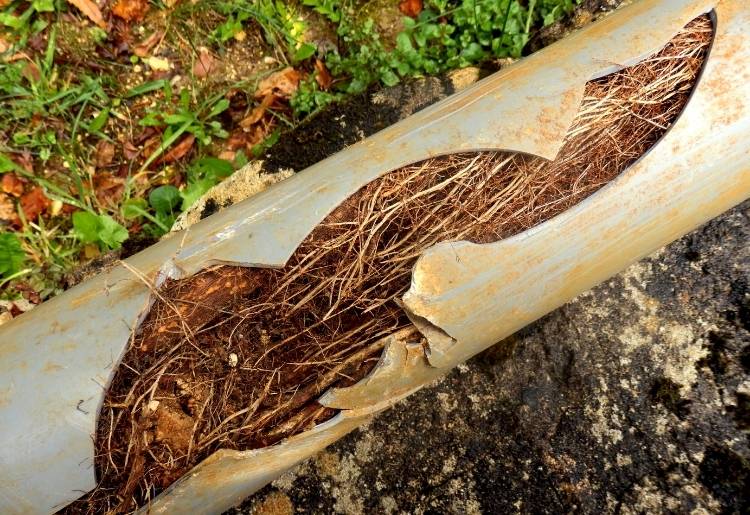Unfortunately, some parts of your home that aren’t in plain sight—like your sewer lines and drain pipes—might need your attention too. If you have lots of shrubs or trees in your yard, tree roots might be able to find their way into your pipes, which can clog them and cause substantial damage, both to your pipes and your wallet (especially if you don't have a home warranty). In this article, we’ll look at how to prevent roots from getting into your pipes—and how to combat them if they get inside.
How Tree Roots Get into Your Sewer Lines
Like all living things, trees need oxygen, water, and nutrients to survive. Sewage contains all these things, so it’s no surprise that tree roots are drawn to it. Typically, this doesn’t pose a problem for homeowners, because tree roots can’t grow into fully sealed, defect-free sewer lines. It’s only when sewer lines crack, fracture, and leak due to excessive wear that tree roots can detect nutrients spilling into the soil. Eventually, roots will then find their way through the cracks and grow into the sewer lines.
Signs of Roots in Drain Pipes

Because drain pipes and sewer lines are often buried underground, it’s difficult to notice at first glance if they’ve sprung a leak—or worse, if they’ve been invaded by tree roots. However, it’s far from impossible to find out. Here are a few signs that your pipes may be in trouble.
Slow or Gurgling Drains
If your drains seem slow or clogged up—or if you hear gurgling noises—it’s possible that tree roots have gotten into your pipes somewhere downstream. Though slow drains may occur for a variety of other reasons, you shouldn’t rule out tree roots as a suspect.
Strong or Foul Odors
If there are unpleasant odors coming from your toilet, bathtub, sink, or washing machine, it’s more likely than not that wastewater inside your sewage lines isn’t draining properly. Usually, this is due to clogged sewer lines, with tree roots being the most common culprit.
Sinkholes on Your Property
If leaks are severe, water could leak into the soil fast enough to destabilize the surrounding area. This creates an underground hole that soon gets filled with more water. Eventually, enough pressure builds around this hole that the surface layer caves downward—creating a sinkhole. If you find any of these ticking time bombs on your property, there’s a chance they could be because your pipes have been critically damaged by tree roots.
How to Prevent Roots from Getting into Your Pipes
Discovering that you might have tree roots damaging your pipes isn’t ideal. The best thing to do is to prevent roots from messing with your pipes in the first place—so you never have to deal with the nauseating odor of sewage or the hazards of sinkholes at all. Here are a couple of ways to be proactive in your prevention efforts.
Plant “Sewer-Safe” Trees and Shrubs
The easiest preventative measure to take is to simply ensure that all trees and shrubs on your property are “sewer-safe.” Of course, no tree or shrub will ever be completely sewer-safe, since they all have roots—but some types of trees and shrubs are less likely to infest your pipes than others.
Trees or shrubs with shallow roots—like dogwood trees, cherry trees, holly shrubs, boxwood shrubs, or other species of dwarf trees—are the most sewer-safe options out there. On the other hand, the trees that are most dangerous for your pipes and sewer lines are usually larger kinds, like elm and birch trees. These trees feature sprawling networks of thick, inflexible roots that extend deep underground and can readily wreak havoc on a leaking pipe.
If you are still planning your home’s landscaping, avoid planting trees or shrubs within 10-20 feet of pipes and sewer lines altogether. Instead, consider flowers or grasses. These plants will be less likely to cause damage to your pipes than even the smallest trees or shrubs and are an ideal choice for any cautious homeowner who wants to guard against unexpected costs and pipe repairs.
Create a Barrier Between Trees and Sewer Lines
Understandably, it’s not always possible to opt-out of having trees near sewer lines—especially if they’ve already been planted. However, that doesn’t mean that your sewers are doomed. Building a barrier between the trees and your home’s pipes is another good option if you’re already having construction done or are willing to do some digging.
Often, physical barriers like metal, concrete, or wood are enough to block tree roots from entering sewer lines. These will need to be buried alongside the drainage pipe as if you were creating an underground wall around the pipe. Ensure that the barrier extends below the pipe or sewage line as well, because roots are flexible and can snake around barriers that leave the underside of the pipe exposed.
Removing Roots with Homemade Root-Killing Remedies
If you already have roots inside your pipes and want to get rid of them altogether, chemical barriers are your friend. These chemical compounds can slow, inhibit, or discourage root growth, keeping the insides of your sewer lines free and clear.
Copper Sulfate

Copper sulfate is a readily available herbicide and is effective against tree roots. The translucent blue crystals are toxic to tree roots, and can be used to destroy roots that have found their way inside pipes or sewer lines. Simply flush some down the toilet and wait around for a while. Though it depends on the amount you use, copper sulfate won’t unclog your drain pipes immediately—it usually takes the toxin a couple of weeks to fully rid your pipes of tree roots.
Keep in mind that copper sulfate isn’t a permanent solution. Tree roots will grow back, and you will need to treat your pipes with the chemical compound every 1 to 2 months in order to prevent tree roots from taking over again.
Also, be careful not to use copper sulfate too frequently or in too high of a concentration if you have older pipes. While today’s sewage pipes are made from plastics, many pipes made prior to 1960 were constructed with iron or steel. Too much copper sulfate will damage metal pipes and could cause leaks or cracks to worsen.
Rock Salt
If you have pipes that don’t respond well to copper sulfate, you could instead consider rock salt. It’s highly effective against tree roots and will dry them out and deprive them of water—killing them within 8 to 12 hours. If you’re afraid that large chunks of salt might further block your sewer lines, consider dissolving some in water before pouring the mixture down the drain.
Don’t flush down too much at once, or else you risk killing more roots than you had planned to—which could hurt or kill your trees. About 1 cup (roughly 1/2 pound) of rock salt, dissolved into water, should do the trick.
Removing Roots with Professional Tools
You can always rid your pipes of tree roots by tackling them physically at the point of intrusion. Using power tools, you can cut down the obstructing roots with minimal collateral damage. Here are two methods.
Mechanical Auger
An auger can be useful against roots obstructing your pipes. The device, also called a drain snake, is a long and flexible cord with a motorized drill bit at the end that can be used to break apart debris stuck inside sewer lines.
You or a plumber can insert the device into a drain, guiding the cord (and the attached drill bit) to the choke point—the place where the roots lie. When powered on, the device will puncture and eventually drill away at the roots—unclogging the pipe and allowing wastewater to drain away properly once again.
Hydro Jetting
The hydro-jet (also known as a pressure washer or power washer) is another helpful device. It essentially functions as an extremely high-pressure hose, which can be inserted into the sewage pipes via a connected drain pipe. At over 4000 pounds per square inch (PSI) of pressure, water jets from the end of the tool blast apart anything they are aimed at—removing roots, buildup, and debris inside the pipe. Once the job is done, the dislodged root fragments can simply be flushed away.
For tougher and thicker roots, the hydro jet can be used alongside an auger or a root-cutting device. Roots would first be roughly cut by the root cutter, then broken apart by the hydro-jet, and finally flushed out.
Conclusion
Finding out that you have tree roots clogging up your drain pipes can be an unpleasant scenario for any homeowner. Luckily, there are ways to prevent this from happening and numerous remedies available if it does.
If you do find roots in your pipes, you’re probably going to have to spend some money to unclog and repair them. Thorough home warranty protection can help prevent financial headaches in situations like these.
Some of the best home warranty providers—like Choice Home Warranty and Select Home Warranty—offer extensive coverage and provide you with access to tens of thousands of vetted professionals, ensuring that you’ll have one less thing to worry about if tree roots ever clog up your pipes.
